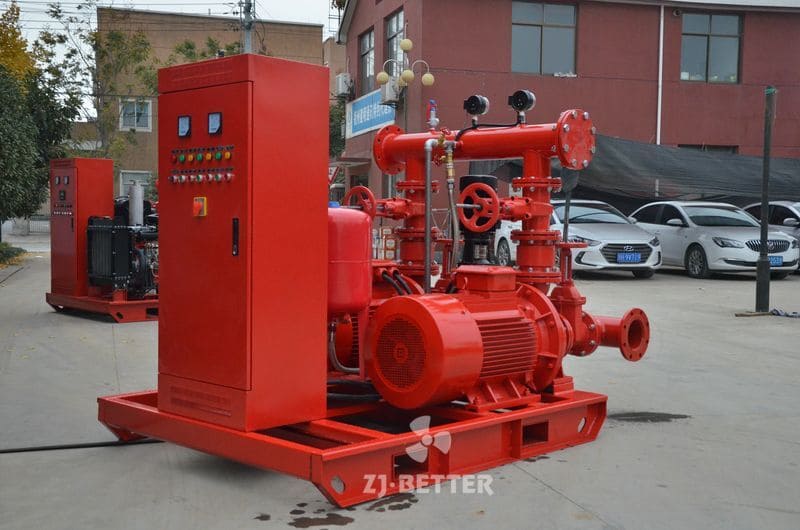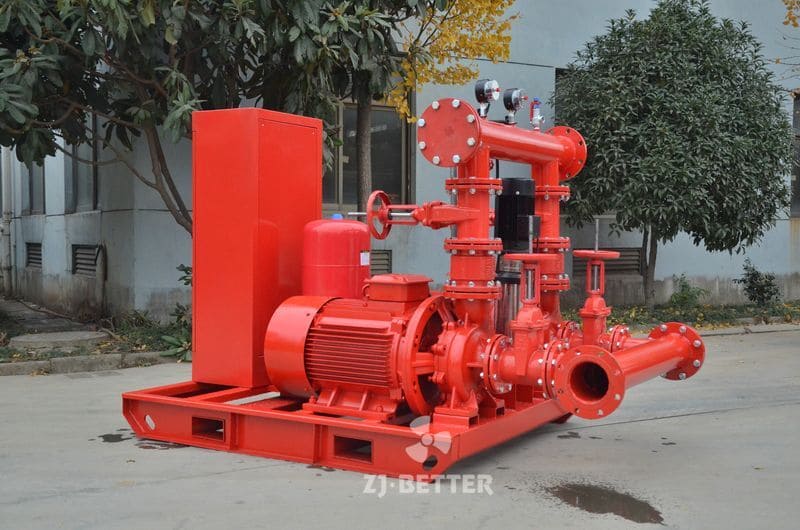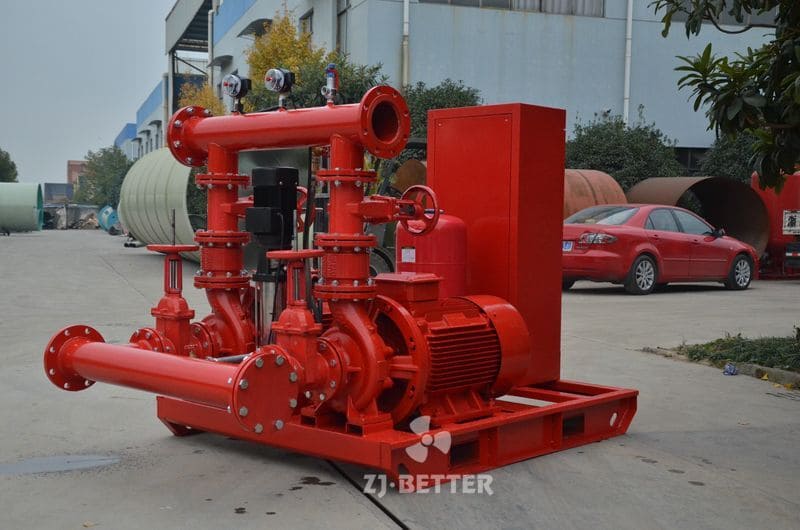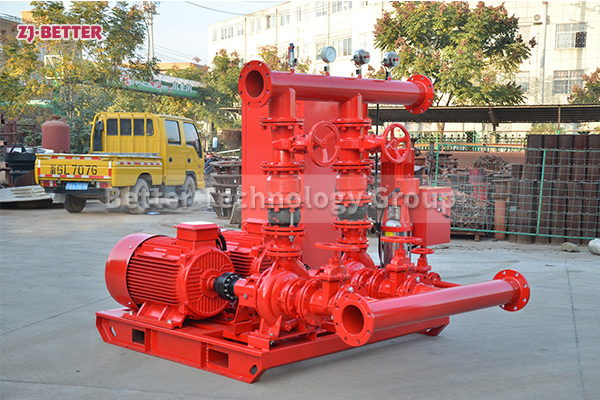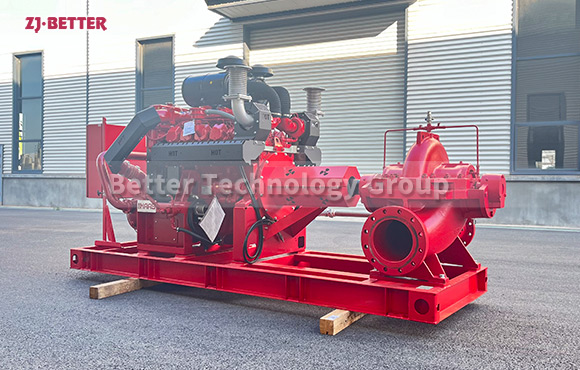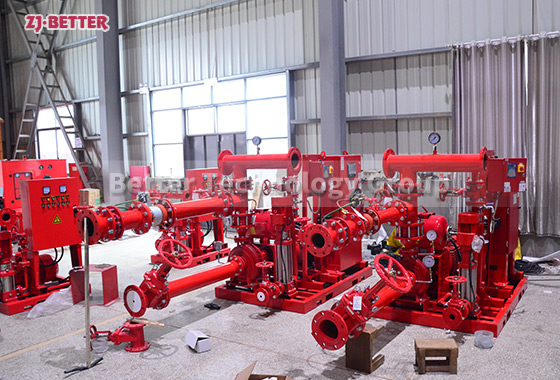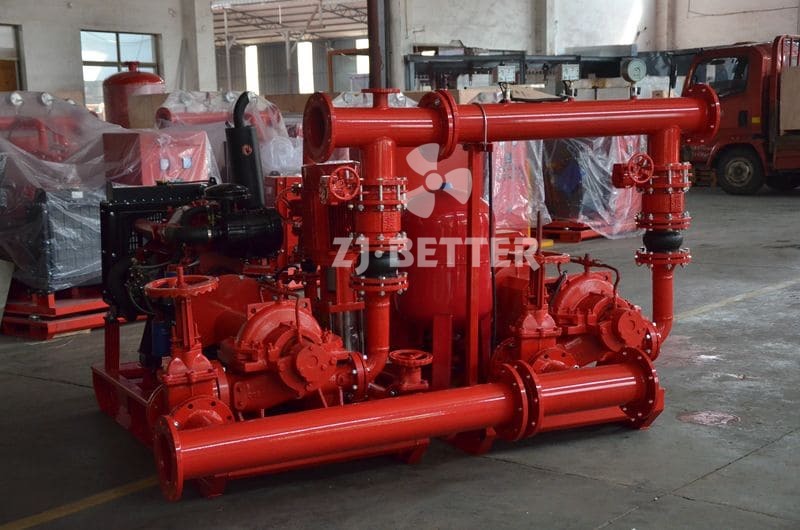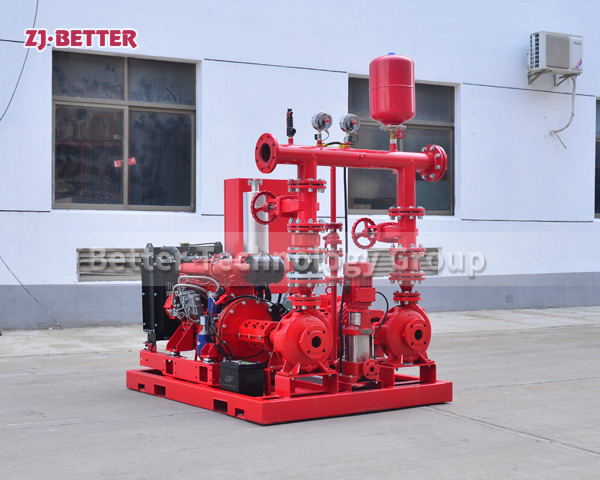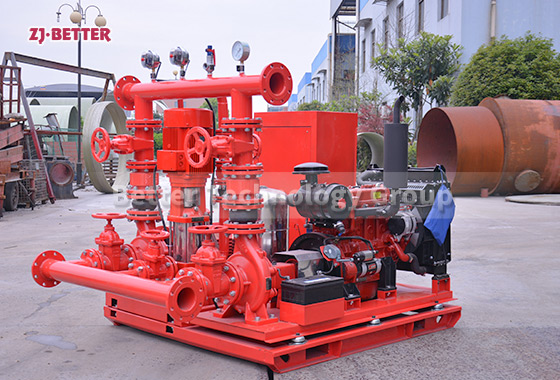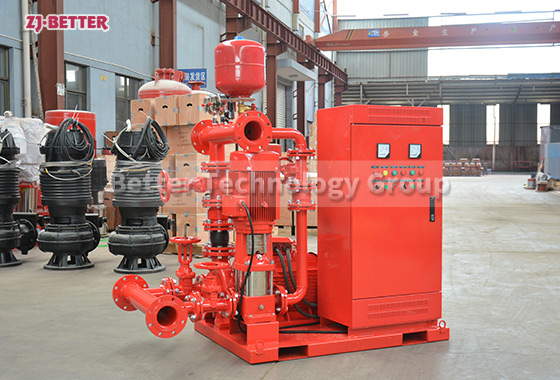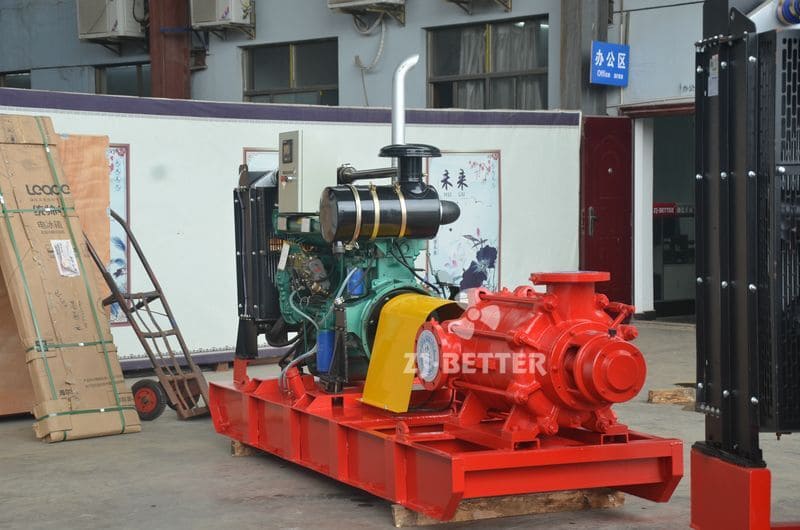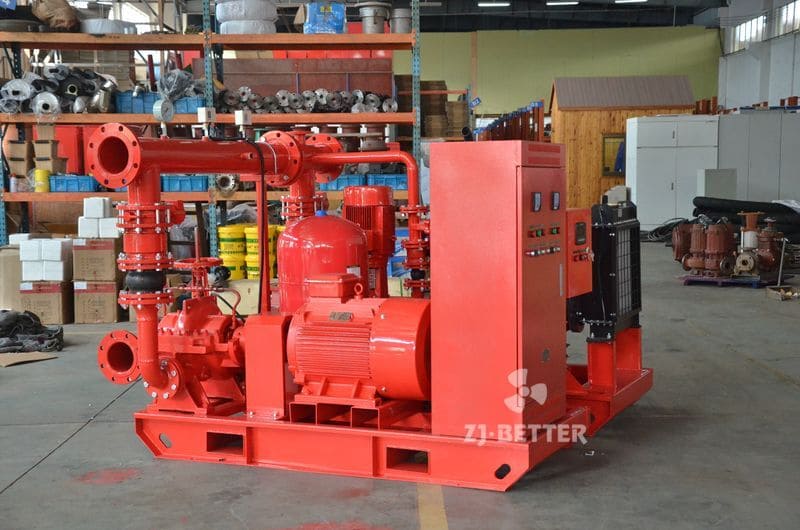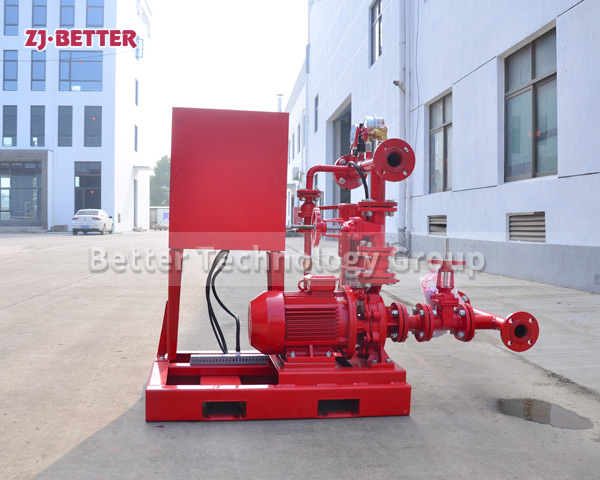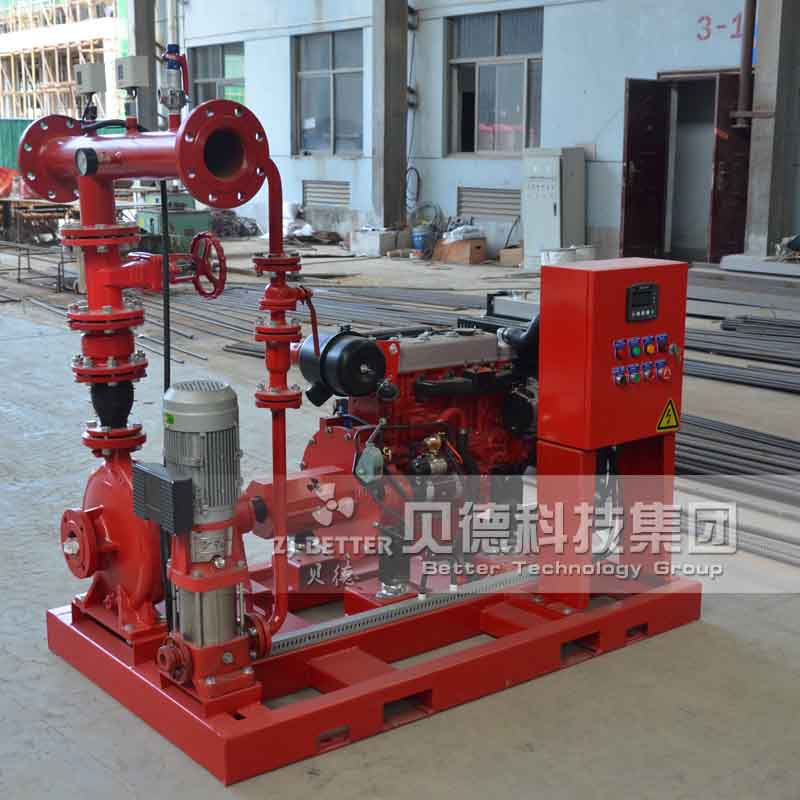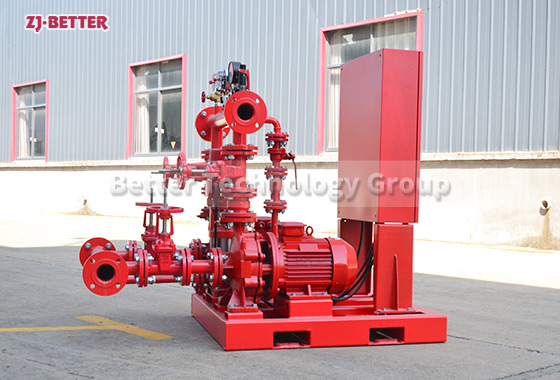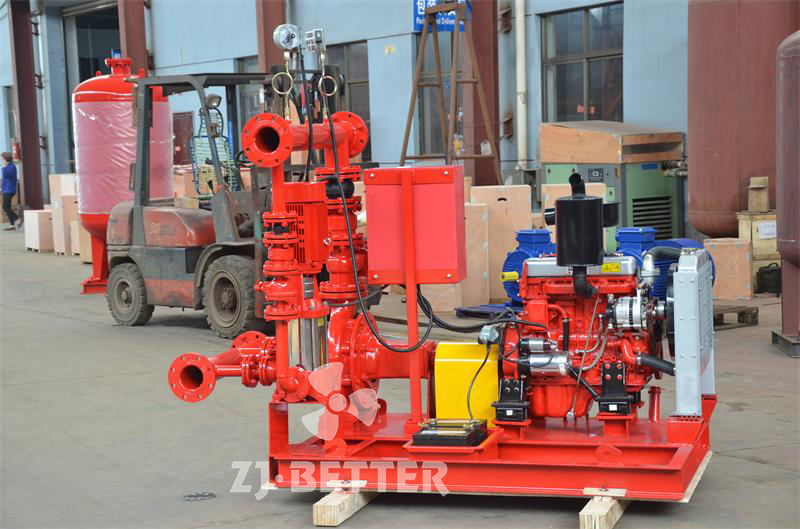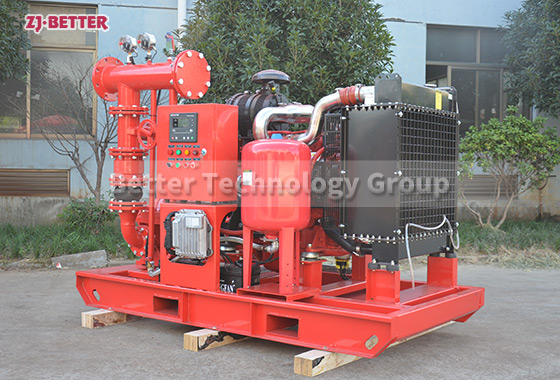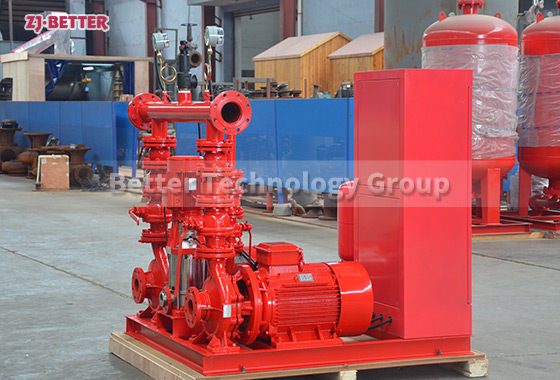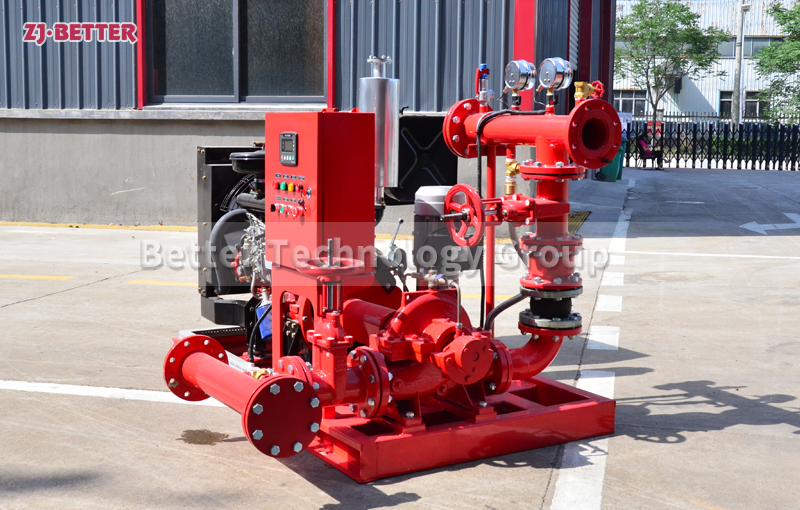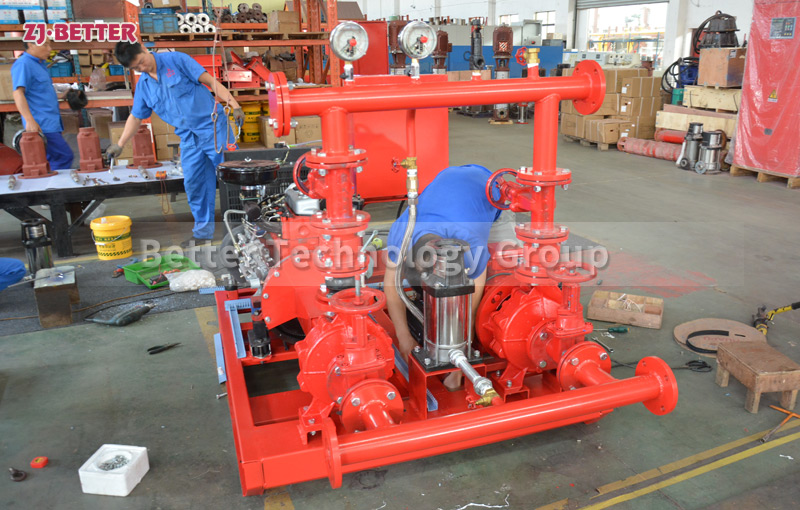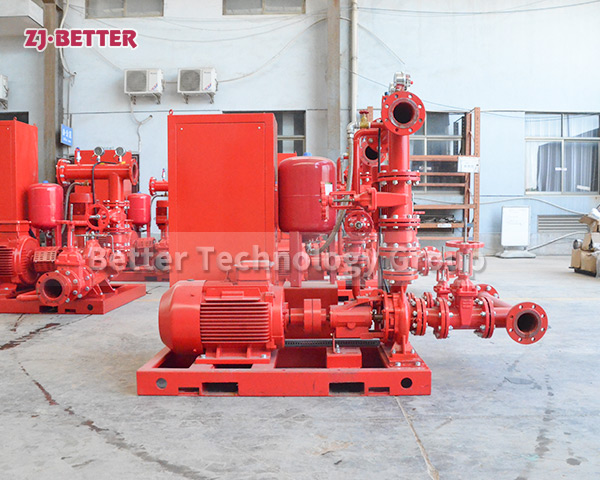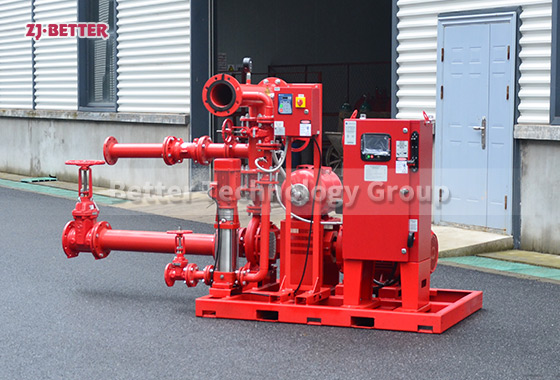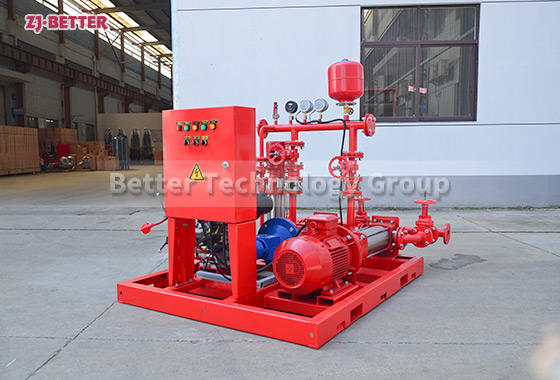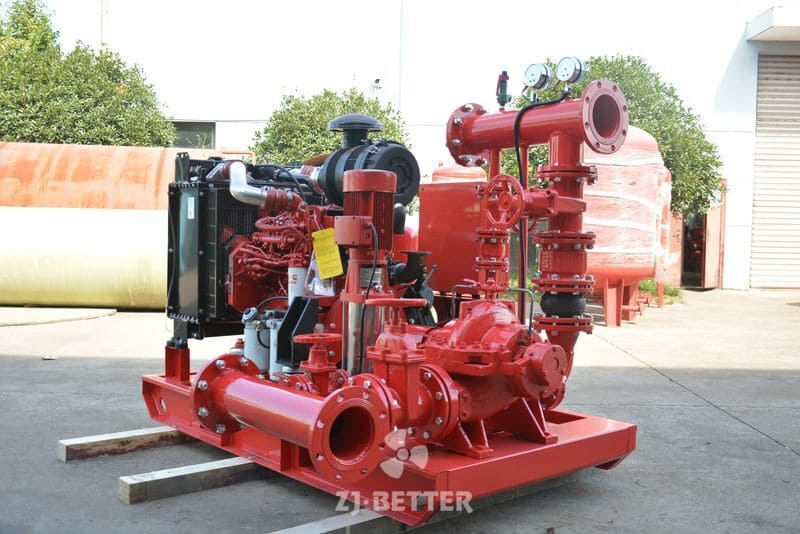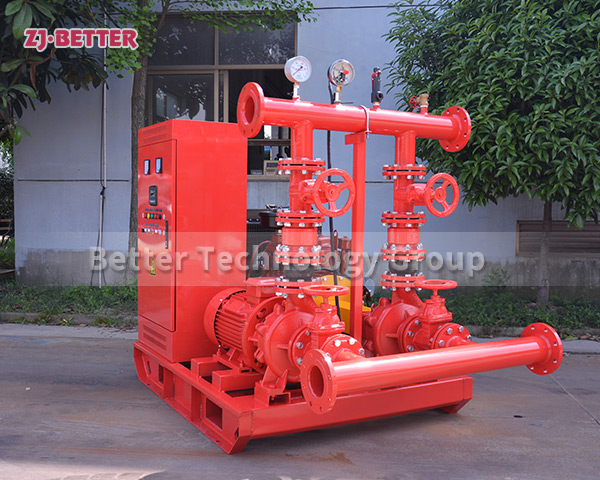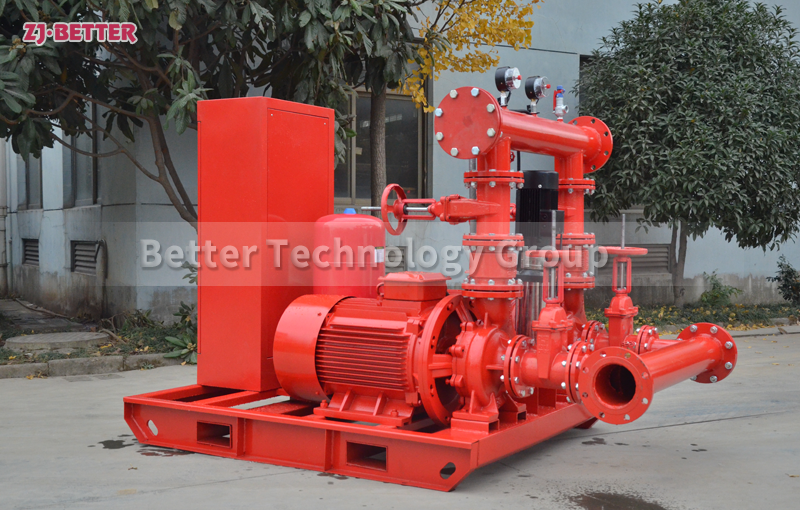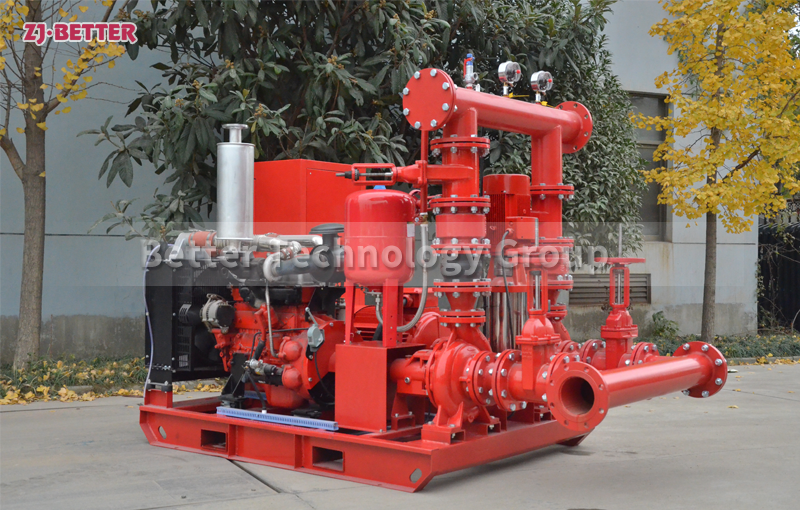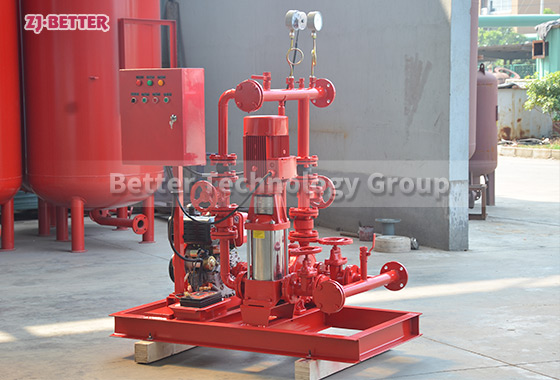750gpm @ 8bar EEJ Fire Pump Set
The EEJ fire pump set is composed of two electric pumps + one jockey pump. The motor of the electric pump is directly connected to the ISW pump head. The jockey pump adopts CDL pump, adopts high-quality NSK bearing and wear-resistant mechanical seal, which is suitable for any emergency firefighting occasion. . Products can be customized according to their own needs.
1. Electric pump, can use multistage pump, material can be cast iron, stainless steel, and bronze impeller
2. Jockey pump, horizontal or vertical, capacity will be small, but head should be higher than electric and diesel engine pump
Jockey material casing: cast iron ,shaft and impeller SS304
3. Control panel: Auto Control of electric pump and Jockey Pump with overload, over current protection.
The control system has current, voltage, power display, and the operating status display of fire pump and steady pressure pump, oil pressure, speed, running time display, manual pump control and automatic remote control
4. Accessories: check valve, gate valve, pressure vessel, generally 0.6mpa, 1.0mpa, 1.6mpa, Pressure Gauge, Pressure Sensor, Common Pipe for Suction and Discharge, Flexible Joints and Flanges, Common Base plant

